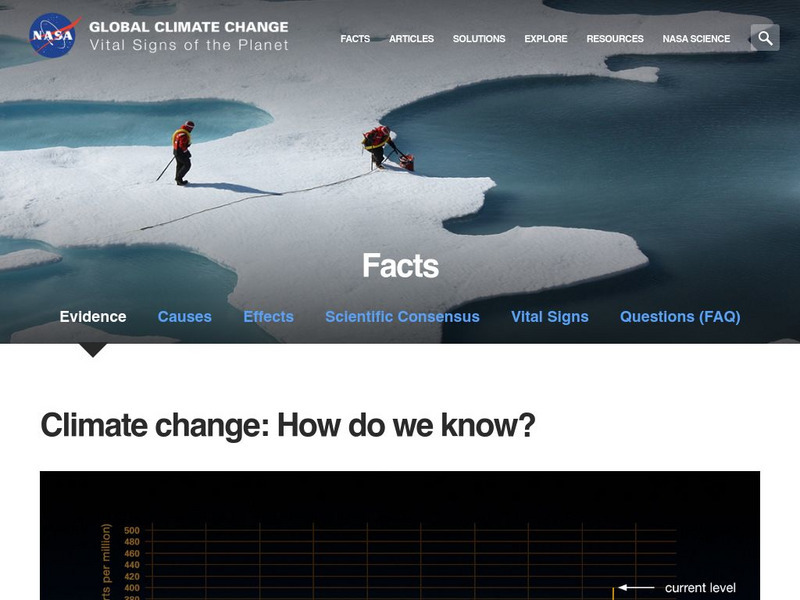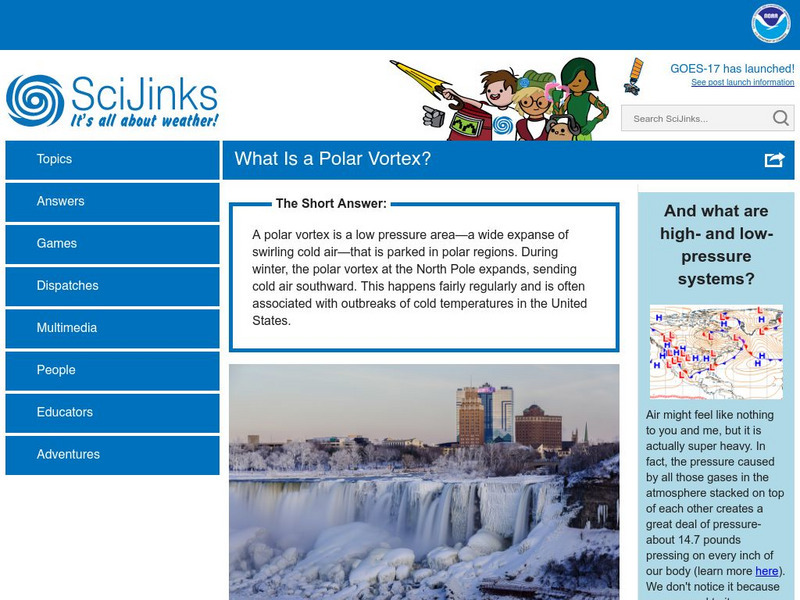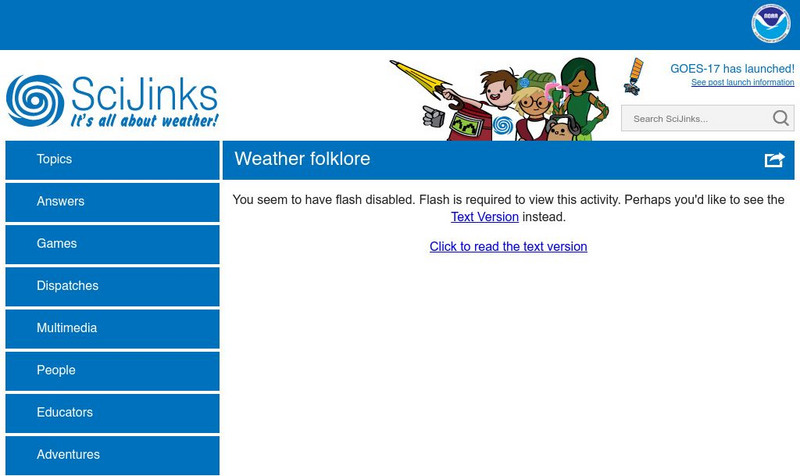NASA
Nasa: Aerial Photography: The Adventures of Amelia the Pigeon
An animated adventure story, developed by NASA, that helps children understand earth science concepts by using satellite photography and other types of aerial photographs to identify physical features on the surface of the earth. Teaches...
NASA
Nasa: Climate Change: How Do We Know?
Provides extensive evidence of the many ways scientists have observed and recorded climate change on a rapid, global scale. Lists different events observed, such as receding ice sheets and evidence in rocks, and presents graphs, images,...
NASA
Nasa: Neptune: Overview: The Windiest Planet
Prepared by NASA, this site provides a detailed look at the planet Neptune. The menu tabs are divided into overview, moons, rings, photo gallery, and facts and figures. Just click to access specific information on any of these topics.
NASA
Nasa: Sun: Overview: Our Star
A graphical representation of facts, figures, and information about our solar system's only star, the sun.
NASA
Nasa: The Geiger Counter
Site from NASA explaining the construction and use of a Geiger counter. The site has links to many related topics, such as plasma, ions, and electrons.
NASA
Nasa: 21st Century Explorer
This is a standards-based program follows that provides content on what astronauts eat, how bodies change in space, and how imagination would help you to become a space explorer. Teacher and student educational resources, glossary, books...
NASA
Nasa: Sci Jinks: What Is a Polar Vortex?
Discover what a polar vortex is and how high and low pressure affects the weather.
NASA
Nasa: Sci Jinks: The Sky Is Broken!
Explains the dangers of volcanic ash plumes to airplanes, such as the eruption in 2010 of the Eyjafjallajokull volcano in Iceland which greatly disrupted air traffic in neighbouring countries.
NASA
Nasa: Sci Jinks: Weather Folklore
Find out some of the weather folklore from various areas of the world.
NASA
Nasa: Solar Data Analysis Center: The Corona
This site provides a detailed overview of the sun's corona. Content includes a focus on research dedicated to the solar corona, and includes numerous images taken during solar eclipses.
NASA
Nasa: Solar Data Analysis Center: The Solar Wind
This site provides insight into research, both past and present, regarding solar wind. Content includes a focus on what solar wind is and its cause.
NASA
Nasa: Our Solar System
This thorough look at our solar system has numerous links to a variety of topics that are updated periodically.
NASA
NASA Kids Club: Rocket Builder
Students can hone their shape-recognition skills and use the plans to build a fleet of rockets.
NASA
Nasa: Material Analysis
Describes the use of alloys on the space shuttle, and how to analyze alloys using X-ray fluorescence.
NASA
Electromagnetic Spectrum: Ultraviolet Waves
Ultraviolet (UV) light has shorter wavelengths than visible light. Though these waves are invisible to the human eye, some insects can see them. The specific wavelength values are given. Uses and applications of these waves are explained.
NASA
Nasa: Jupiter: Moons: Elara
Statistics and general information about the thirteenth moon of Jupiter. One statement sums it up: "Very little is known about Elara."
NASA
Nasa: Helios, the Solar Powered High Flyer
This site is an article on, "Helios can fly higher than any other airplane! And it uses only the Sun's energy for fuel!"












